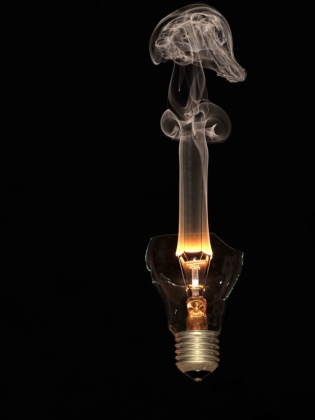Brussels pulls plug on old light bulbs

By Bruno Waterfield in Brussels
Traditional light bulbs have only two years of life left after a Brussels summit declared yesterday that they will be phased out in the battle against climate change.
Energy efficient lights replace incandescent bulbs
The old-style incandescent filament bulbs will be replaced by more energy efficient compact fluorescent lamps (CFLs).
The decision came as Tony Blair and other European Union leaders agreed measures to slash carbon emissions and to ensure that by 2020 a fifth of Europes energy is from renewable sources.
Calling time on the traditional bulb, first patented in the United States by Thomas Edison in 1879, Angela Merkel, the German chancellor said: We believe that each individual can make a genuine contribution through responsible use of light bulbs and lamps.
EU sources said that driving the old bulbs off shop shelves by 2009 will be achieved by increasingly tightening the restrictions on what is legal, thereby forcing manufacturers to invest in the new technology. While the measures, to be drawn up by the European Commission in the form of an EU directive, will delight the green lobby, the public may take more convincing.
Advertisement petition on the Downing Street website which asks the Prime Minister o ban non-energy efficient light bulbs has attracted only 478 names, compared to the millions that have signed another No 10 web petition protesting Government plans for road pricing.
A Government spokesman said: Switching to energy efficient light bulbs offers people the opportunity to do their bit in the fight against climate change.
The eco-friendly CFLs will reduce the EUs carbon emissions by up to 25 million tons a year if old-style bulbs disappear.
EU officials described the CO2 reduction as up there with plans to include aviation in Europes carbon trading scheme, a measure which saves 50 million tons annually.
The Government calculates that if every British household were to replace three 60 or 100 watt light bulbs with CFLs the energy saving would be greater than the power used by the countrys entire street lighting network.
But there are drawbacks. The new CFLs are more expensive and require more energy to make.
There is also an environmental cost to be set against the energy savings. CFLs contain mercury so extra waste disposal rules may be required.
Householders will also have to change their habits in other ways. They will no longer be able to throw old bulbs out in the rubbish.
Consumers will also find that the new bulbs take longer to switch on, that their light is less warm and that they do not work with dimmer switches.
British officials believe that CFLs, which use 67 per cent less electricity, will appeal to the public eventually. The good thing for consumers is that CFLs save electricity and last four times longer, saving money for people in the long term, said one. have your say
Created by Steve Ellwood on 17th May, 2007
Author
 | Steve EllwoodQualified as an Electrician, founder of BLT Direct |



